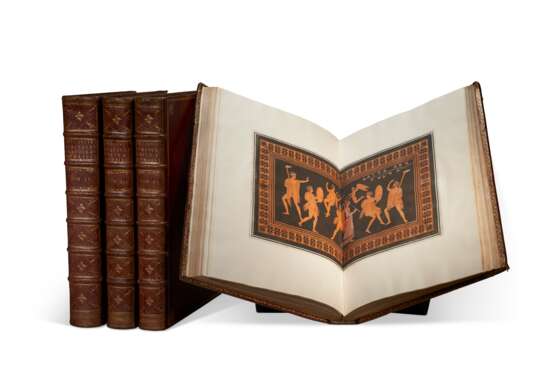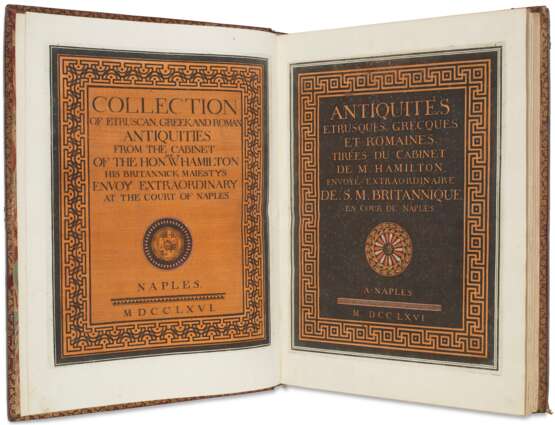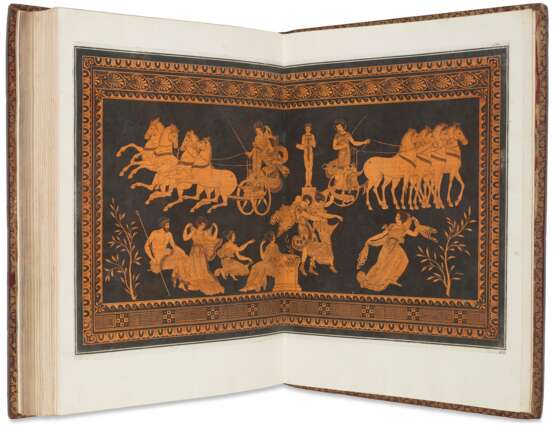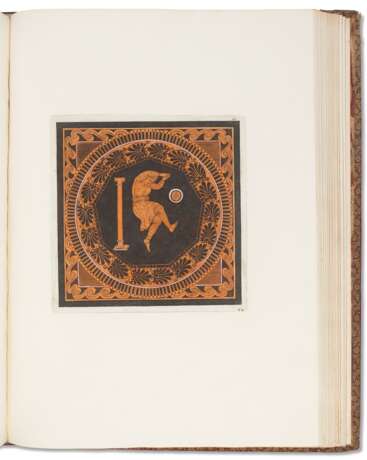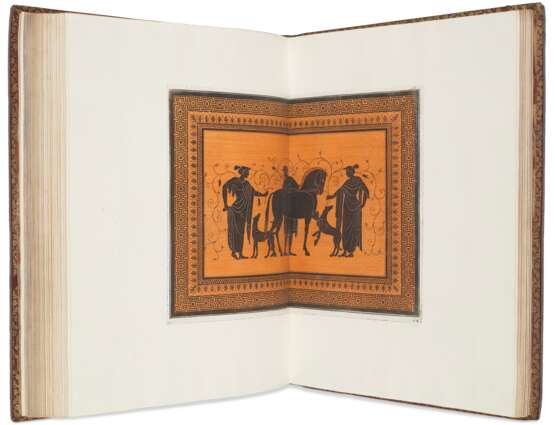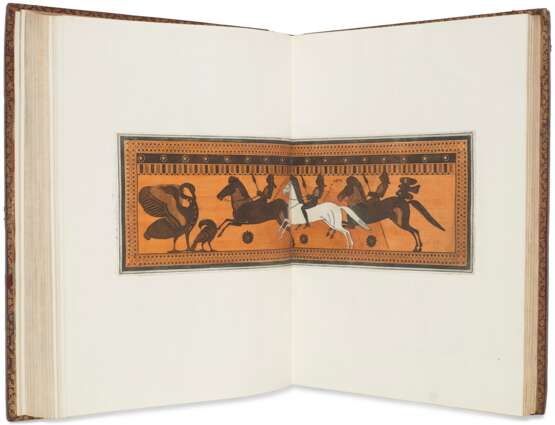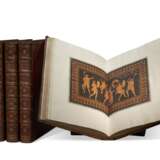Collection of Etruscan, Greek and Roman Antiquities from the Cabinet of the Hon. William Hamilton.
15.10.2021 00:00UTC +00:00
Classic
Verkauft
212500USD $ 212 500
| Auctioneer | CHRISTIE'S |
|---|---|
| Veranstaltungsort | Vereinigtes Königreich, London |
| Aufgeld | see on Website% |
Archiv
Die Auktion ist abgeschlossen. Es können keine Gebote mehr abgegeben werden.

ID 627535
Los 45 | Collection of Etruscan, Greek and Roman Antiquities from the Cabinet of the Hon. William Hamilton.
Schätzwert
$ 80 000 – 120 000
The beautiful Stroganov copy of the most sumptuous antiquarian publication of its time, bound in contemporary red morocco. Printed in Naples, written by the English, and fêted by the French—Brunet calls it an "ouvrage précieux, exécuté avec beaucoup de luxe,” while in Cohen-de Ricci’s judgement it is an “edition splendide et de grand luxe,”—this work represents the culmination of the 18th century European antiquarian impulse. It documents William Hamilton’s first ancient vase collection, and is profusely illustrated with fine hand-colored engravings which not only helped change the way art historians looked at the humble pot, but is also “of great importance in the development of neo-classical designs for pottery and porcelain; it influenced Wedgwood especially” (Blackmer).
William Hamilton came to Naples as an ambassador in 1754 and quickly set himself up as a new Pliny: blending serious duty with serious leisure and fascinated by absolutely everything around him. He "loved nature and art as one, and shared the universal interests of the antiquaries of the past" (Sloan). His vase collecting began soon after, with the brilliant but rather scurrilous Pierre François Hugues—styling himself as "d'Hancarville"—acting his agent. "The basis of [his first collection] was the purchase of the Greek vases belonging to the Porcarini family in in 1766," which Hamilton bought and enlarged, and then sold to the British Museum in 1772” (Blackmer). Before their shipment of England, all the objects were listed, drawn and described under the supervision of d'Hancarville. For some time, such vases were thought to be a product of the Etruscan civilization, but there was a growing understanding that the vases were really Greek—one which Hamilton himself was coming to even as his catalogue, entitled Collection of Etruscan, Greek and Roman Antiquities, was being published.
One striking feature of the text, largely written by d'Hancarville, is "its apparent indifference to the principal subject" (Sloan). For d’Hancarville, an associate and also aspiring-rival of the famous German art historian Winckelmann, this book was his opportunity to make his own lasting contribution to the scholarship on ancient art. While his arguments are rather garbled, he seems to anticipate Ernst Gombrich's distinction between conceptualism and realism, arguing that art's primary purpose is, and has been since the stone age, to communicate through visual signs rather than simply copy nature in more and more accurate ways (ideas which d'Hancarville may have plagiarized from the Italian scholar Octavian Guasco). A reviewer later commented that what the book needed was "a smaller torrent of erudition."
Unfortunately, with the first two volumes issued, publication was then interrupted by d'Hancarville's expulsion from Naples for debt. Hamilton was forced to chase him down to Florence, where he found his collaborator in prison and his copper-plates in the hands of creditors. The last two volumes did not appear before 1776, with Hamilton's having arranged d'Hancarville's debtors into a syndicate to earn back their losses. While the collection was sold en bloc, by the end of the following decade, Hamilton, the consummate collector, was acquiring again. His friend, the artist Tischbein, wrote in his memoirs that Hamilton had come to him full of joy and "declared he could resist no longer and had started to buy vases all over again." Although Blackmer states that the edition was of 500 copies, it appears that only 100 copies of the two later volumes were issued, and this, together with the long gap in publication, accounts for the relatively high number of incomplete sets. An elegant work which exemplifies the learned and discriminating taste of its patron, the greatest collector of his age. Berlin Kat 890; Blackmer 845 (435 plates); Brunet I, 321; Cohen-de Ricci 474; Sloan, Vases and Volcanoes (1996).
Four volumes, folio (475 x 360mm). 2 hand-colored engraved title pages in each volume [French and English], 5 engraved dedication pages, 435 engraved plates, 183 of which are hand-colored and many of double-page or folding, engraved vignettes and elaborate historiated initials, some in color (a few areas of slight loss of pigment). Contemporary red morocco gilt, edges gilt, marbled doublures (some light wear and repairs at extremities). Provenance: Grigori Alexandrovitch Stroganov (1770-1857; bookplate) – Grigori Aleksandrovich Stroganov (1823-1878; bookplate shelf-mark '1030').
| Künstler: | William Shakespeare (1564 - 1616) |
|---|---|
| Angewandte Technik: | Bleistift |
| Künstler: | William Shakespeare (1564 - 1616) |
|---|---|
| Angewandte Technik: | Bleistift |
| Adresse der Versteigerung |
CHRISTIE'S 8 King Street, St. James's SW1Y 6QT London Vereinigtes Königreich | |
|---|---|---|
| Vorschau |
| |
| Telefon | +44 (0)20 7839 9060 | |
| Aufgeld | see on Website | |
| Nutzungsbedingungen | Nutzungsbedingungen |
